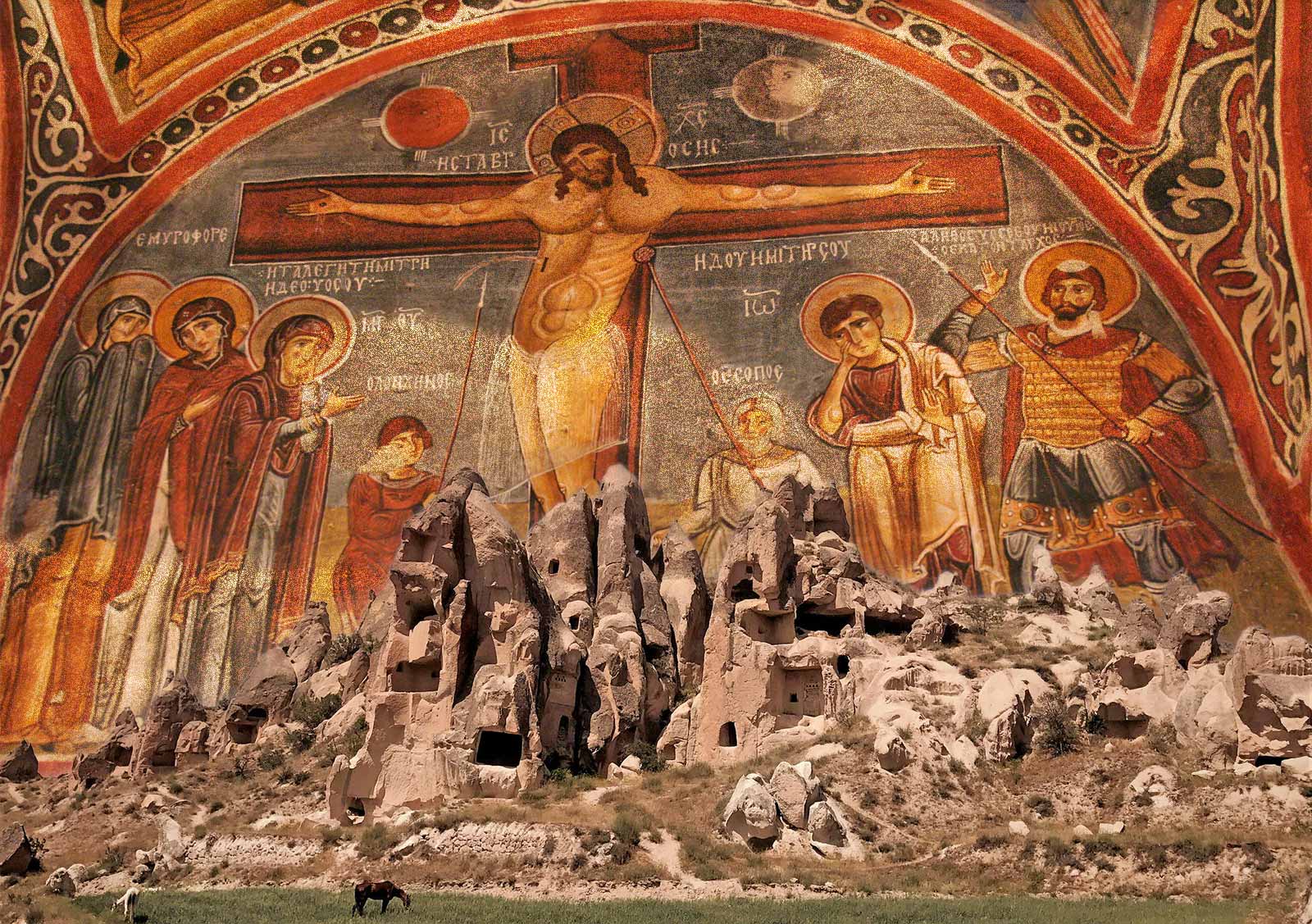
- On 19/08/2024
- In Places to visit Tips for travellers
- Tags: Byzantine, Turkey, Turkey Travel
Byzantine Frescoes to Armenian Cross-Stones: A Cultural Journey through Turkey
If you are like me, you likely constantly seek out slightly out of the way places that are steeped in history and offer cultural gems. Turkey is a country that keeps on giving because it consists of a mixture of civilizations. However, after Istanbul or Cappadocia, there is an amazing trip waiting for those who can dig deeper – from Byzantine frescoes to Armenian cross-stones. Allow me to take you on a cultural tour across some of Turkey’s most surprising and less known historical sites.
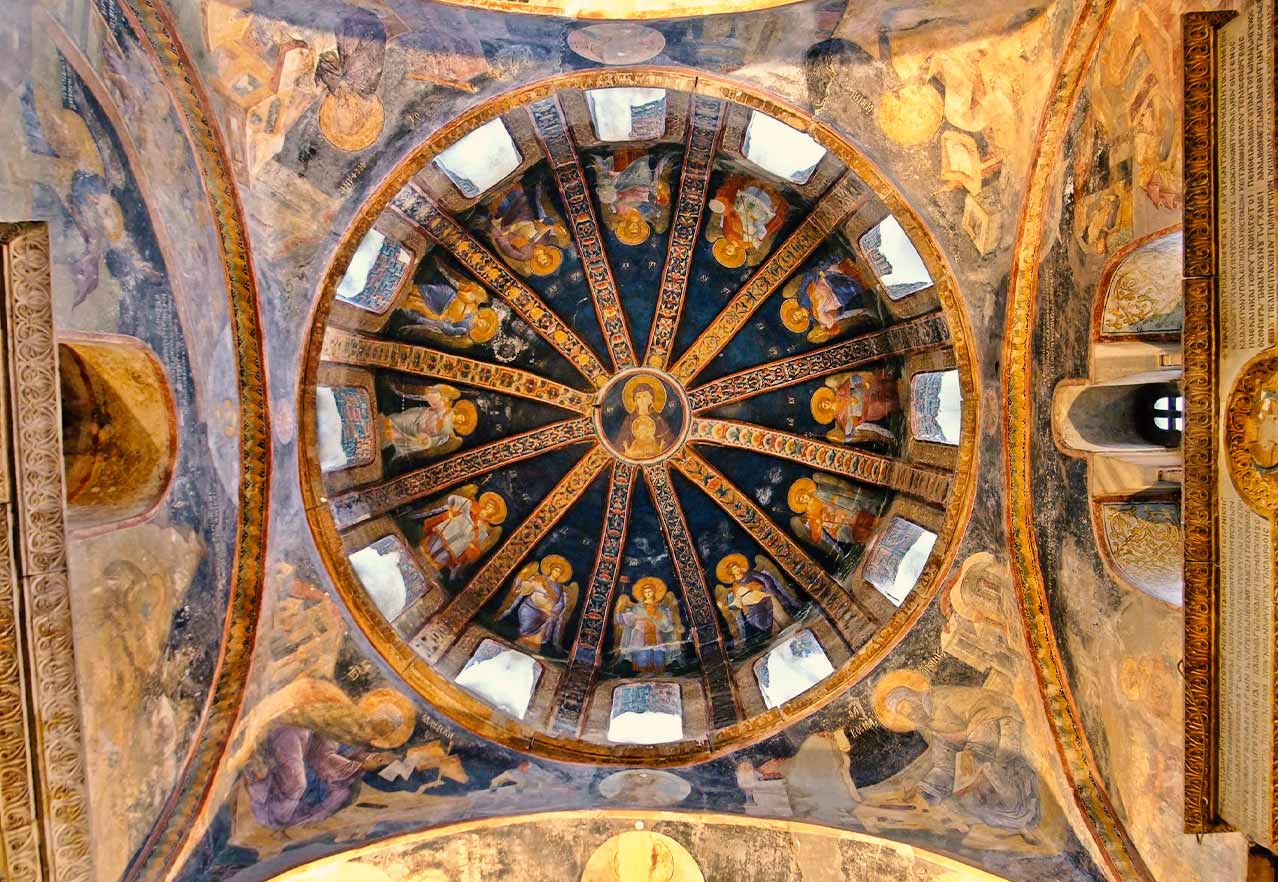
Chora Museum Kariye Mosque Frescos
Reasons for visiting Turkey
Turkey is famous for its beaches, bazaars and oh! Food. But let’s not forget about its rich history. However, Turkey does not only have Ottoman palaces or Roman ruins; it has become a melting pot of cultures with beautiful frescoes, architectural styles that defy logic among other things. If you love history, art or simply want to discover hidden attractions this journey provides a part of Turkey which is not in your average guide book.
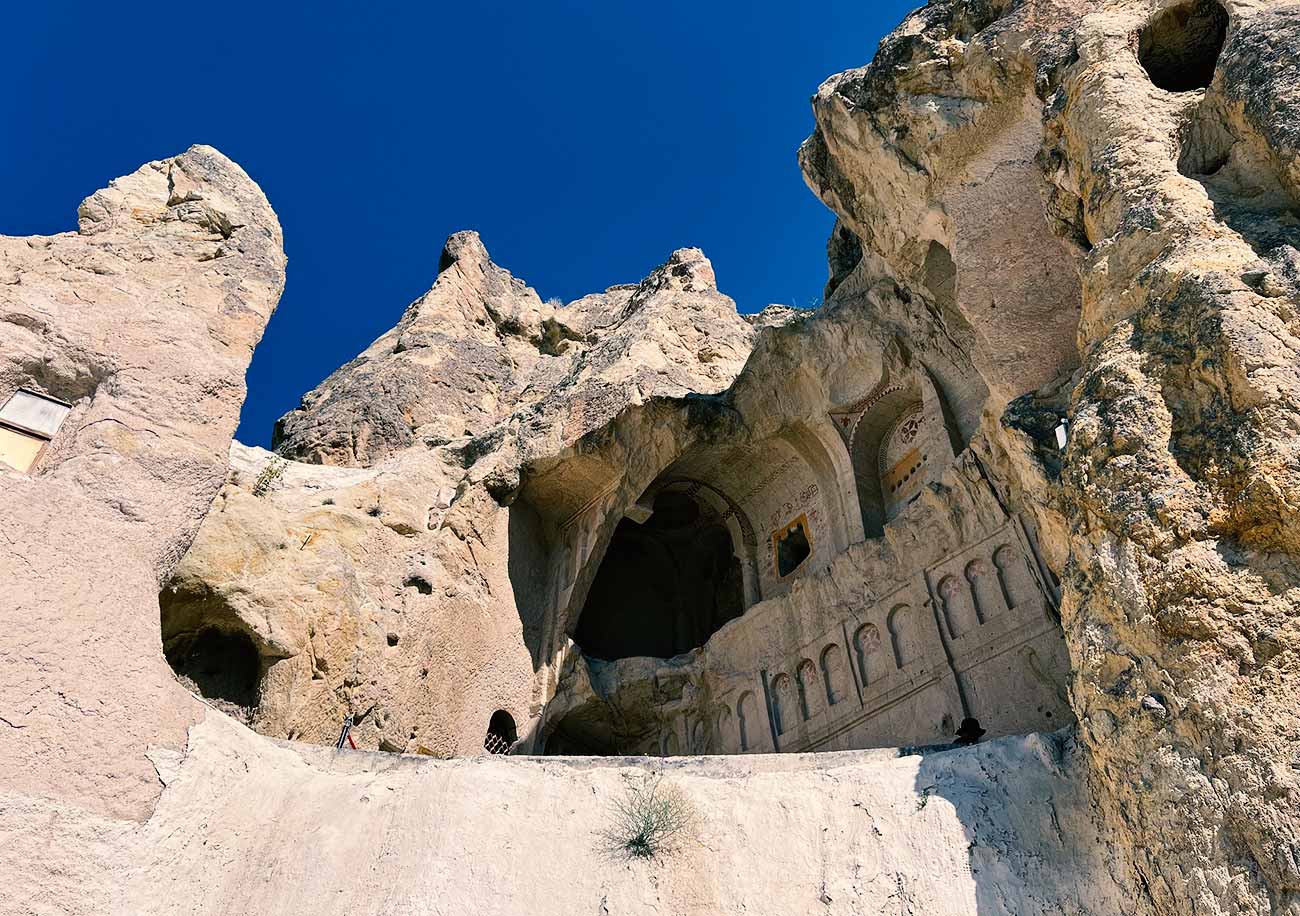
Turkey Cappadocia Goreme Open Air Museum Dark Church
Byzantine Frescoes: What are they?
Asking, “Okay, but what exactly are Byzantine frescoes?” Well, picture yourself walking into a church that has been there for centuries. The walls hang with vibrant otherworldly paintings and the air is filled with incense. These frescoes date back to the Byzantine Empire and cannot be merely seen as religious representations. They tell us what used to be in this area and shows how artistic these people were with their faith.
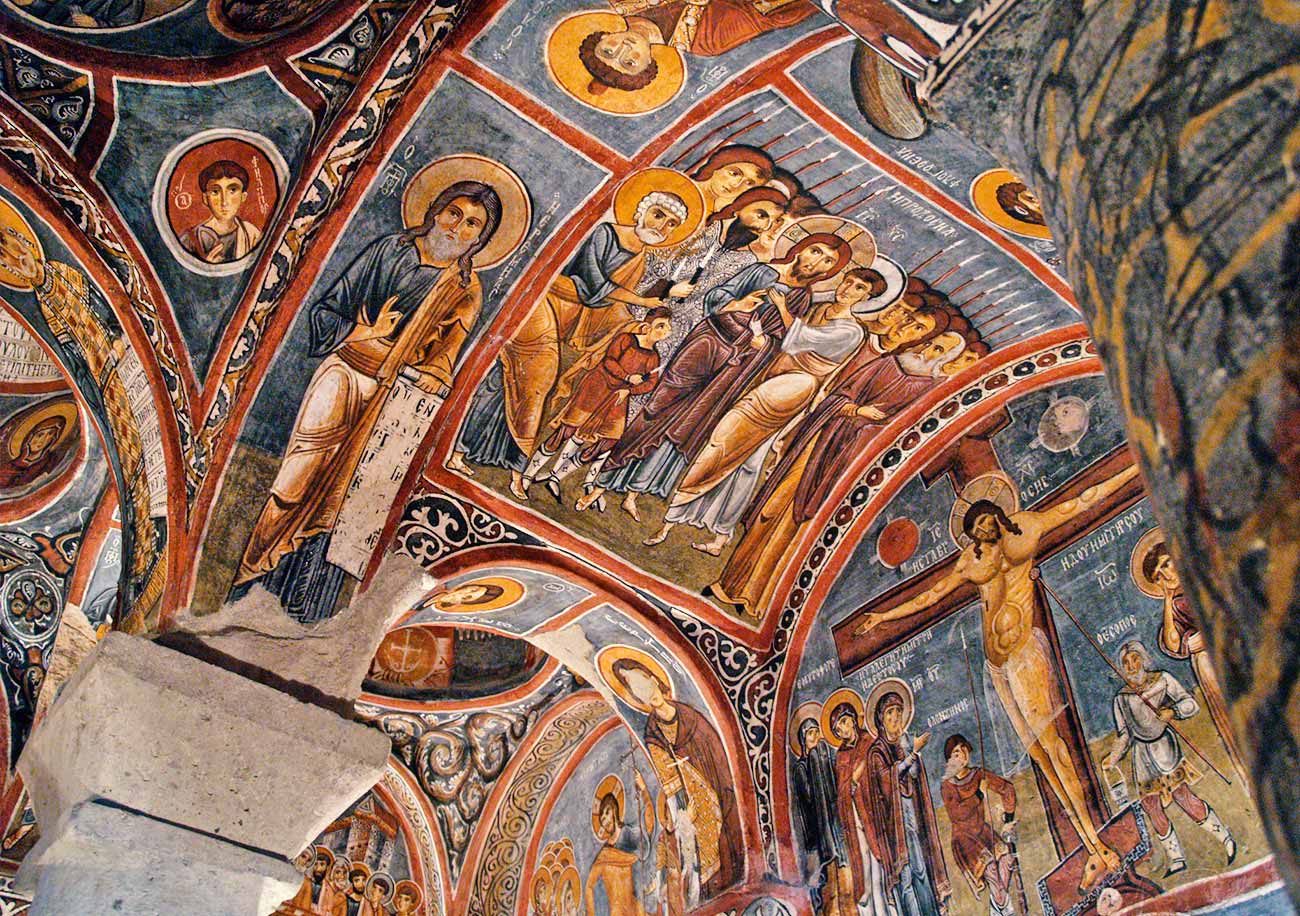
Cappadocia Goreme Open Air Museum Dark Church Inside Frescoes
One of the destinations where you can see these is Göreme in Cappadocia which is an ancient city. It means moving back in time when you visit Göreme open-air museum. The details and colours in these frescoes are unbelievable and the fact that they have managed to remain intact all along has been nothing short of a miracle. However, out of all churches, Dark Church (Karanlık Kilise) remains far more impressive; it is worth every additional ticket bought.
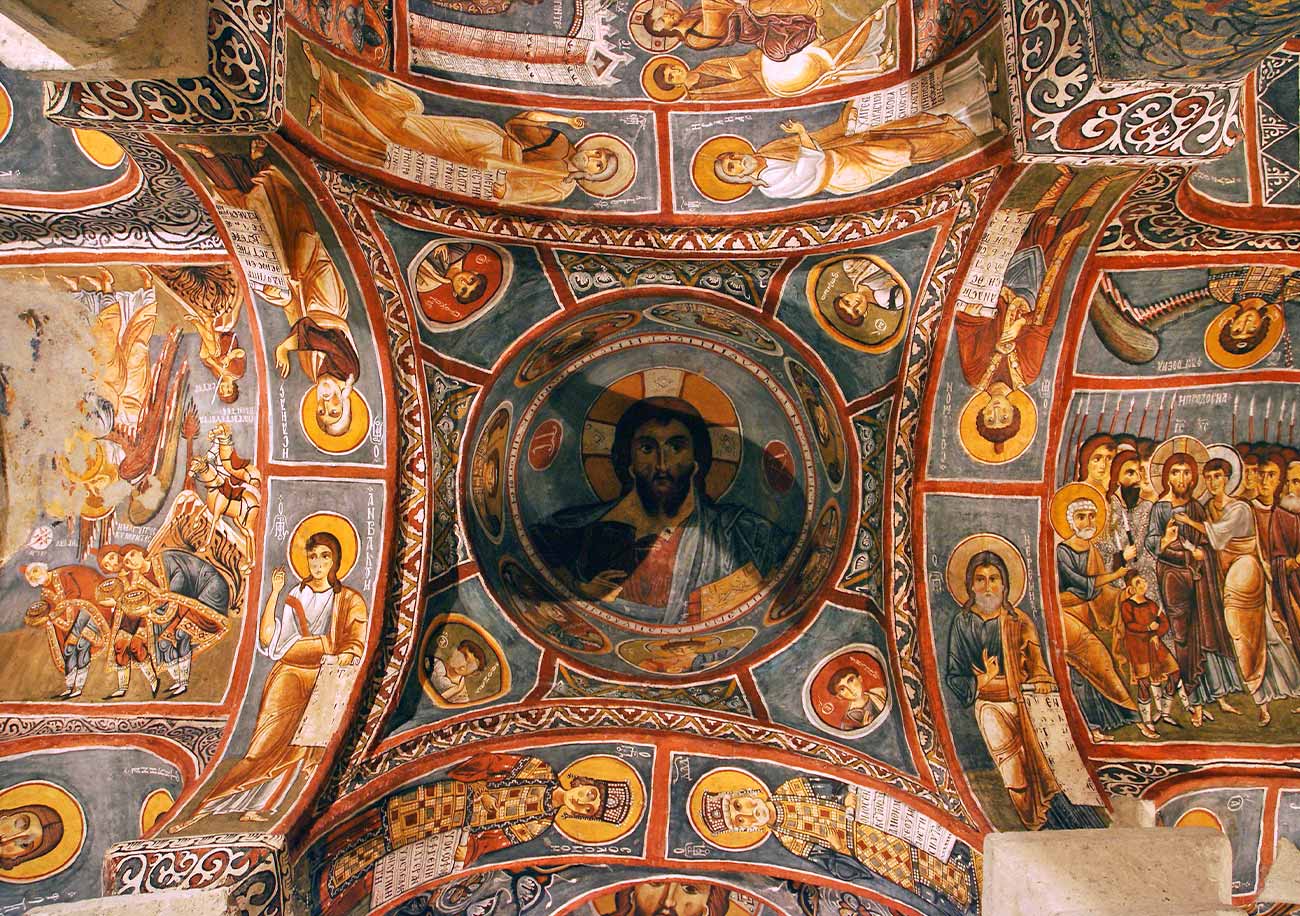
Cappadocia Dark Church Inside Frescoes
Byzantine Frescoes and Armenian Heritage in Istanbul
The city of Istanbul is a treasure trove of history, some amazing examples being Byzantium frescoes and Armenian cultural sites. While everyone’s aware of Cappadocia’s frescoes, Istanbul is also home to stunning Byzantine art—especially at the Chora Mosque (Kariye Camii). Situated in Edirnekapı neighborhood, once a church, then transformed into a museum and now converted into a mosque, this place has magnificent Byzantine frescoes and mosaics ever seen. It is amazing how detailed biblical scenes in the naos and paracclesion inspire piety and artistry.
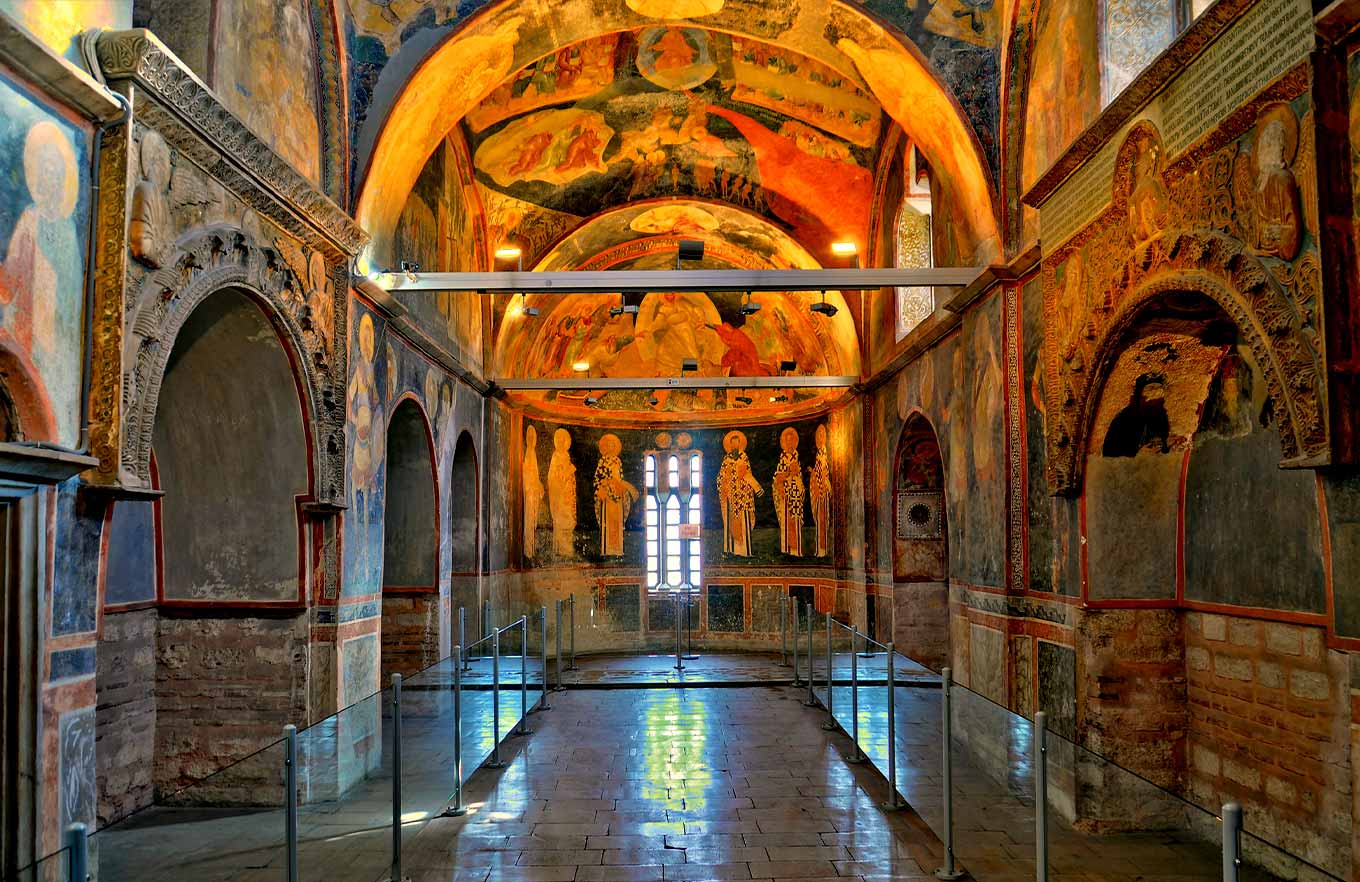
Chora Museum Kariye Mosque Interior and Frescos
Armenian heritage in Istanbul is equally rich with many important locations spread throughout the city. One such location lies within Kumkapı Armenian Patriarchate which forms the historical center of Armenians’ life in Istanbul. Inside this patriarchate you will find Surp Asdvadzadzin Patriarchal Church—an ancient Armenian temple acknowledged as one of the oldest and most significant religious buildings of its kind in Istanbul. In spite of several renovations that it underwent, it still remains the same keeping its historical value for all these years when Armenians resided here. The understanding about layered history while visiting these sites enriches your visit to Istanbul.
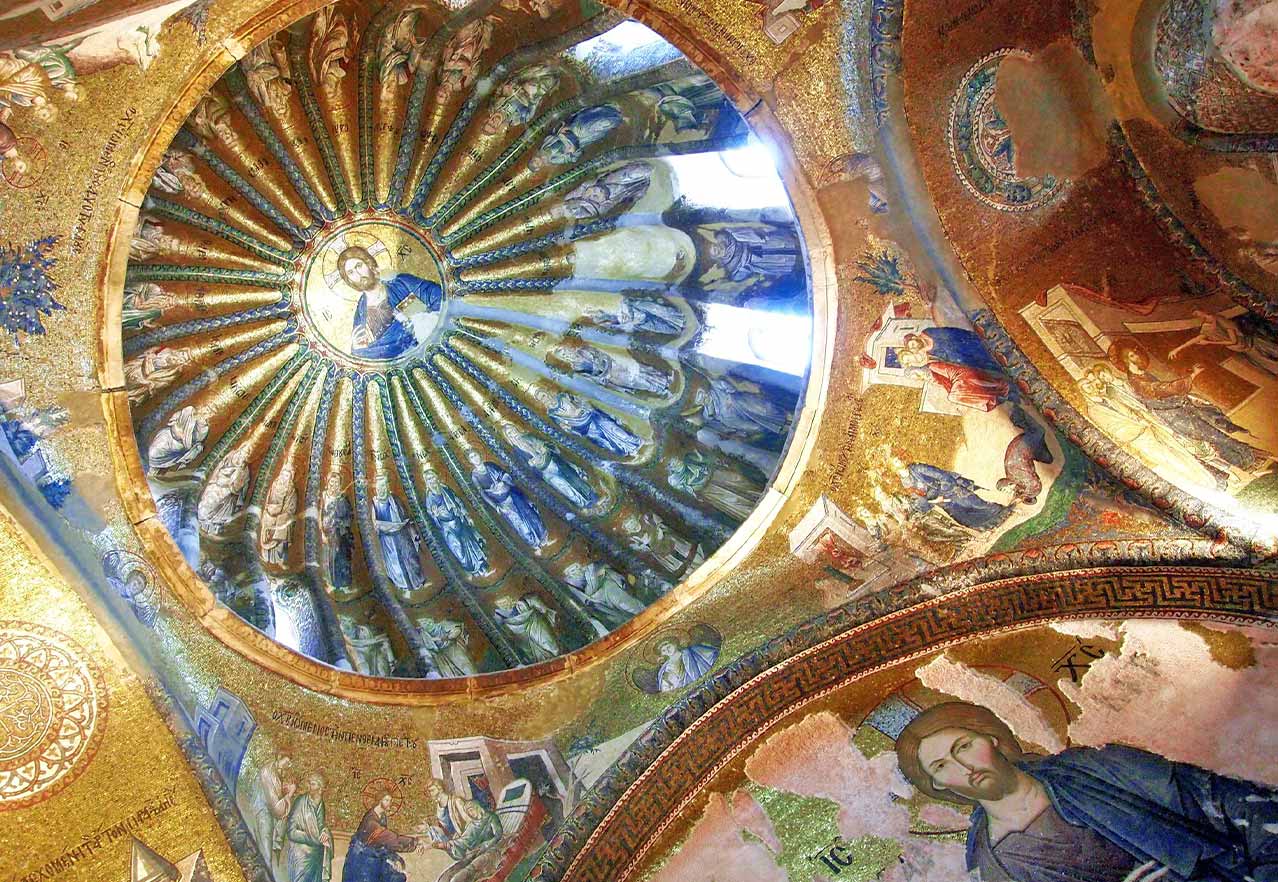
Chora Museum Kariye Mosque Dome Frescos
Exploring Armenian Cross-Stones (Khachkars)
Switching gears now, we will talk about something different. While Armenian cross-stones or khachkars leave a lasting impression on your soul due to their non-complex nature and spiritual depth, Byzantine frescoes stroke your eyes through their artistic appeal. Most often seen on graves or close to churches, these intricately carved stones are testimony to Armenians’ devotion plus artistry.
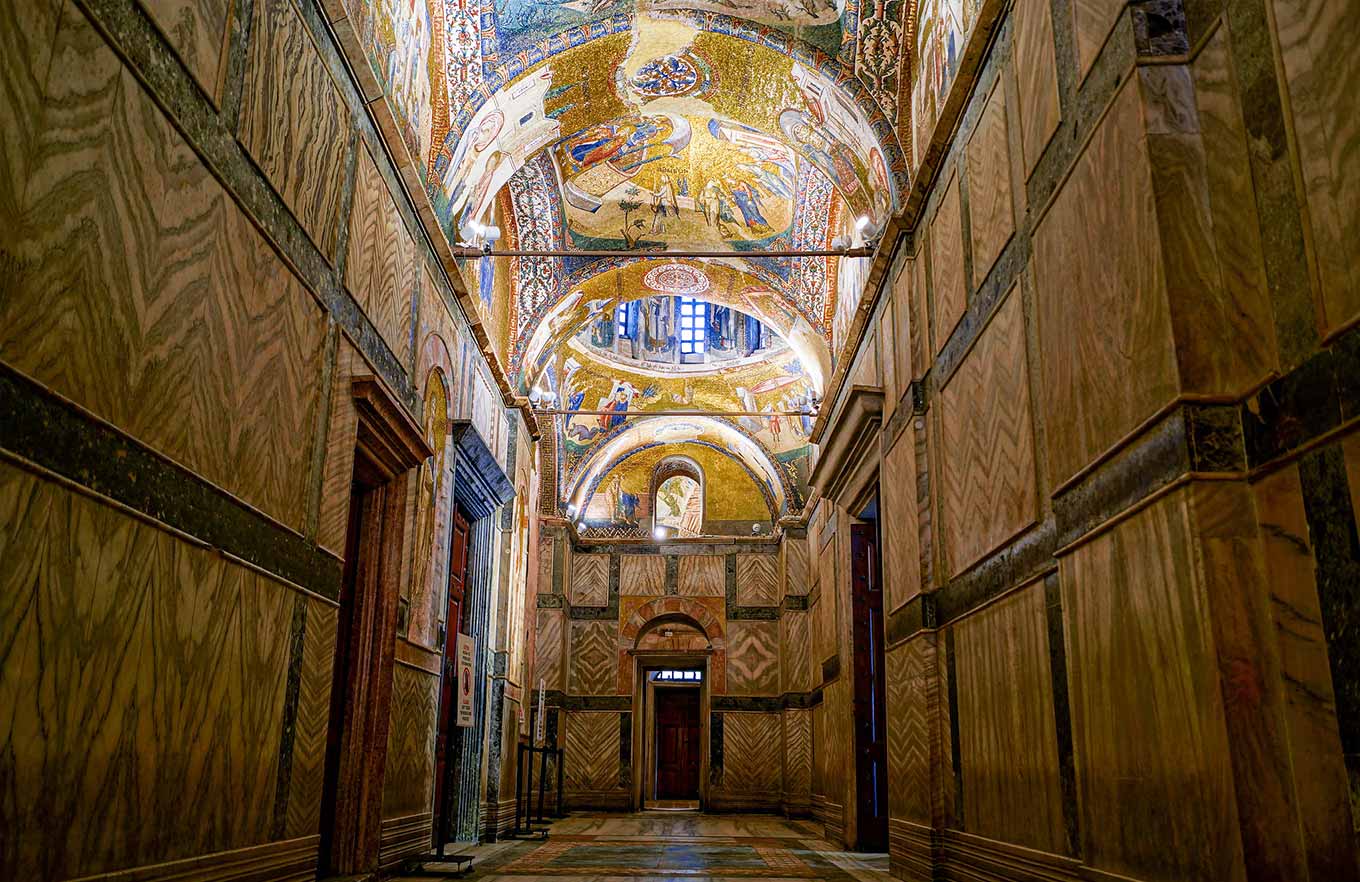
Chora Museum Kariye Mosque Inside
One of the most significant sites for khachkars in Turkey is Akdamar Island in Lake Van. The island is home to the stunning Church of the Holy Cross (Surb Khach), where you’ll find these cross-stones scattered around, each one telling a silent story. The journey to Akdamar Island itself is an adventure—you’ll need to take a boat from the mainland, which adds to the sense of pilgrimage.
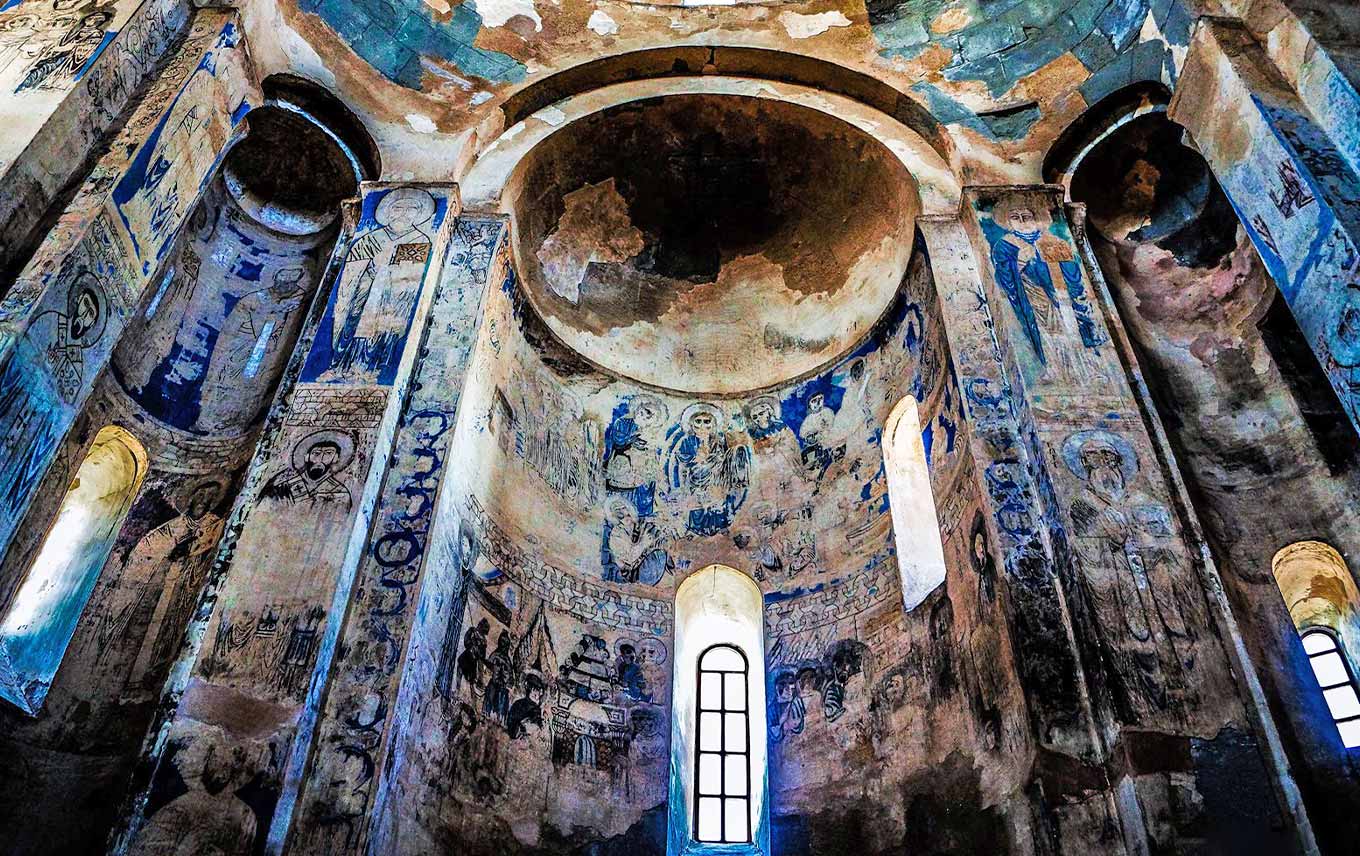
Church of the Holy Cross (Surb Khach) Frescos
How to Visit?
So, one may ask, how do you visit such awesome places? To begin with, you will want to be in Istanbul. It is the main center for flights and buses that go to other parts of the country. From Istanbul, we can take local flights going to Nevşehir and Kayseri via Cappadocia and Göreme. In case you are travelling to Van, you will need to fly there as well but fortunately Turkish Airlines and Pegasus fly on a regular basis.
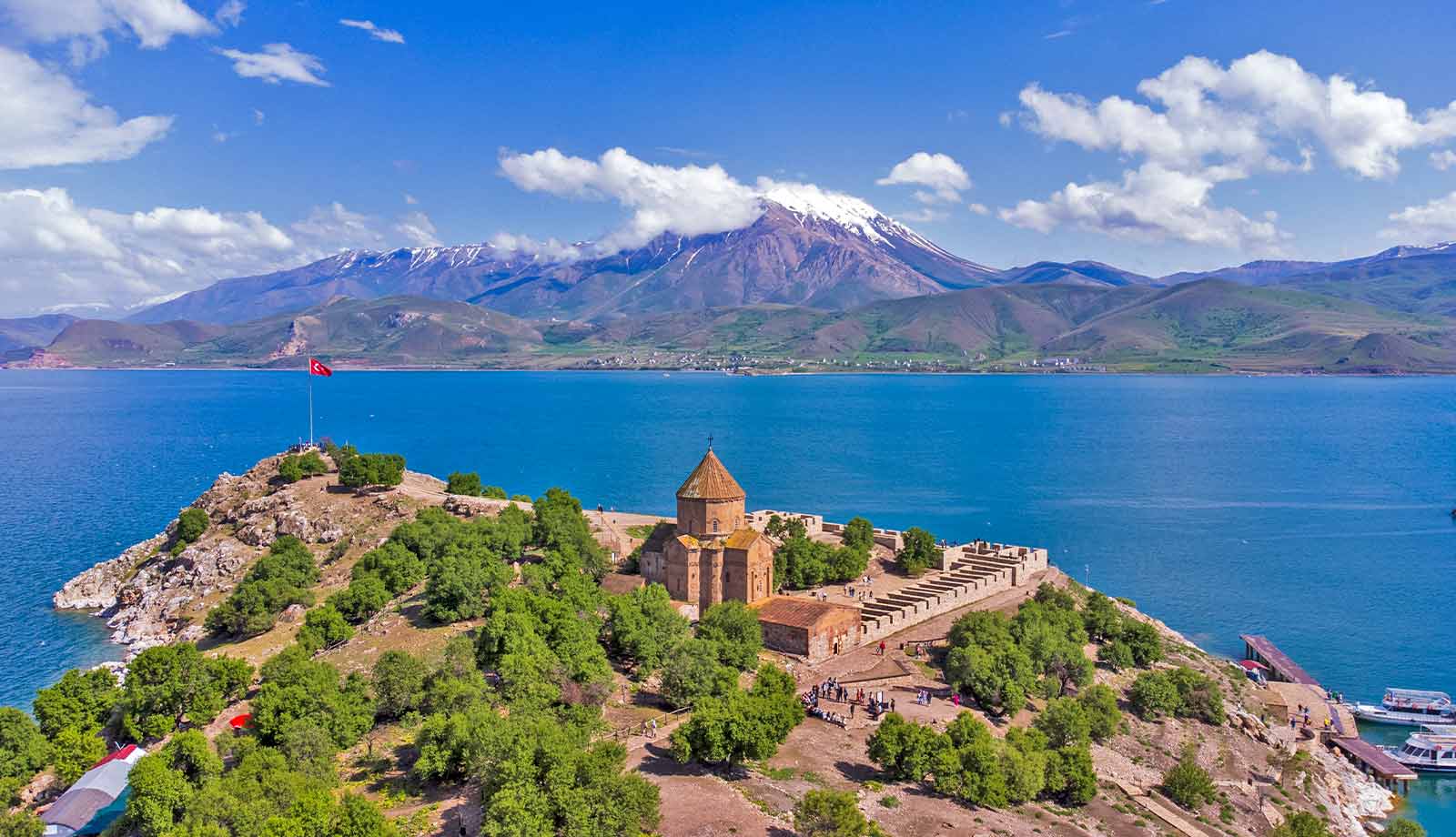
Akdamar Island, Lake and Armenian Church
On arriving at your destination country it is better if you rent a car so that you can make your own schedule. This especially applies for Cappadocia where the landscape is an integral part of human experience as revealed by structures and objects that people have created through time. So as to visit Akdamar Island, travelers should head for Gevaş town where they will find boats taking them there regularly.
Pro tip: Try to go early in the morning or late in the afternoon to avoid the tourist crowds and get that perfect Instagram shot.
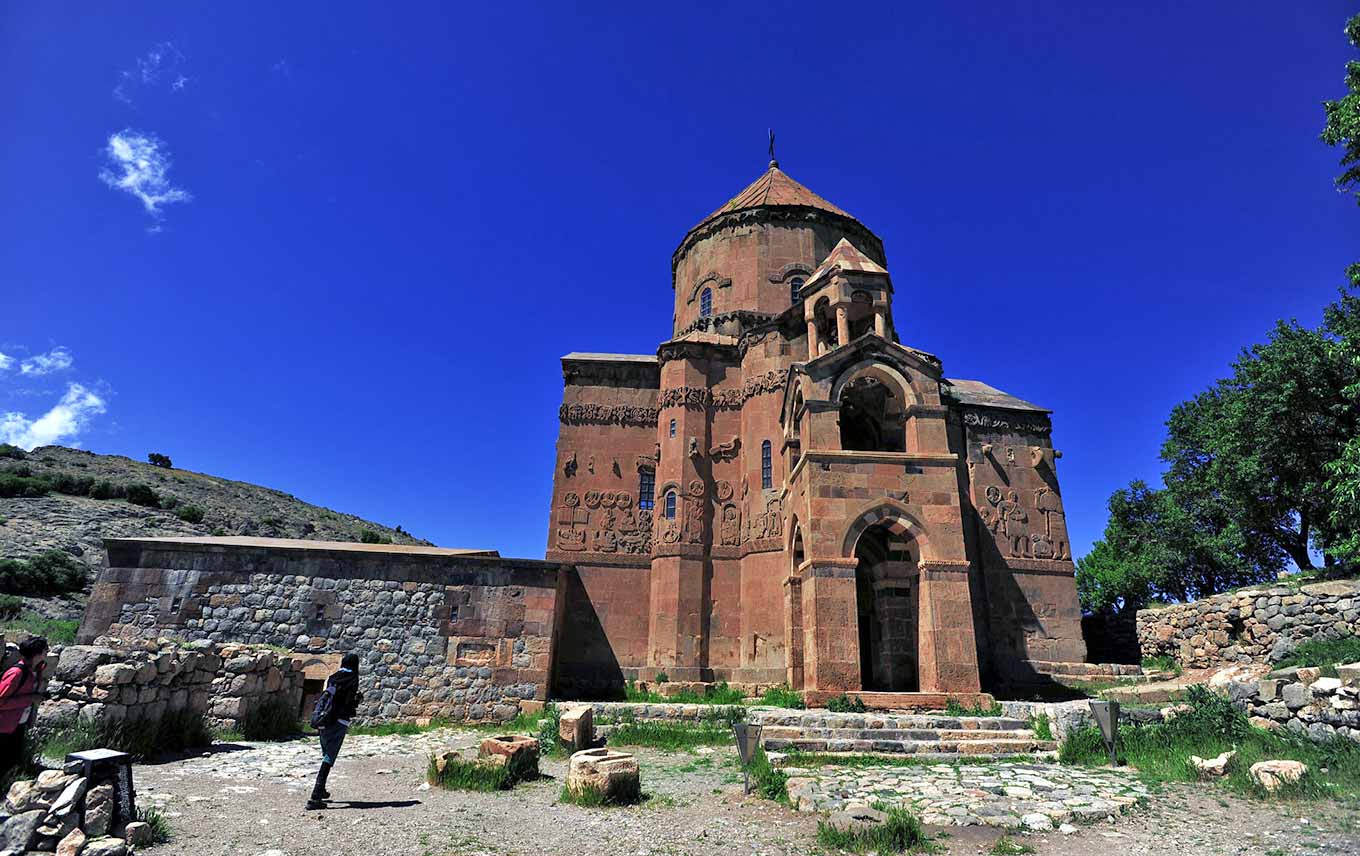
Church of the Holy Cross (Surb Khach)
Why It’s Worthwhile
I understand; Turkey is big and you might be asking yourself “why should I go all this way just to see some old pictures and stones?” But believe me when I say these are not just any pictures or rocks. They are monuments from a long gone era, evidences of history viewed not only with our eyes but also with our souls. Additionally, you will be familiarizing yourself with parts of Turkey which most tourists do not see; something I always consider a great achievement on its own account

Turkey Cappadocia Balloons and Sky View
So pack your bags, grab your camera, and get ready to step back in time. Whether it’s the vivid colors of Byzantine frescoes or the quiet strength of Armenian cross-stones, this cultural journey through Turkey is one you won’t forget.



